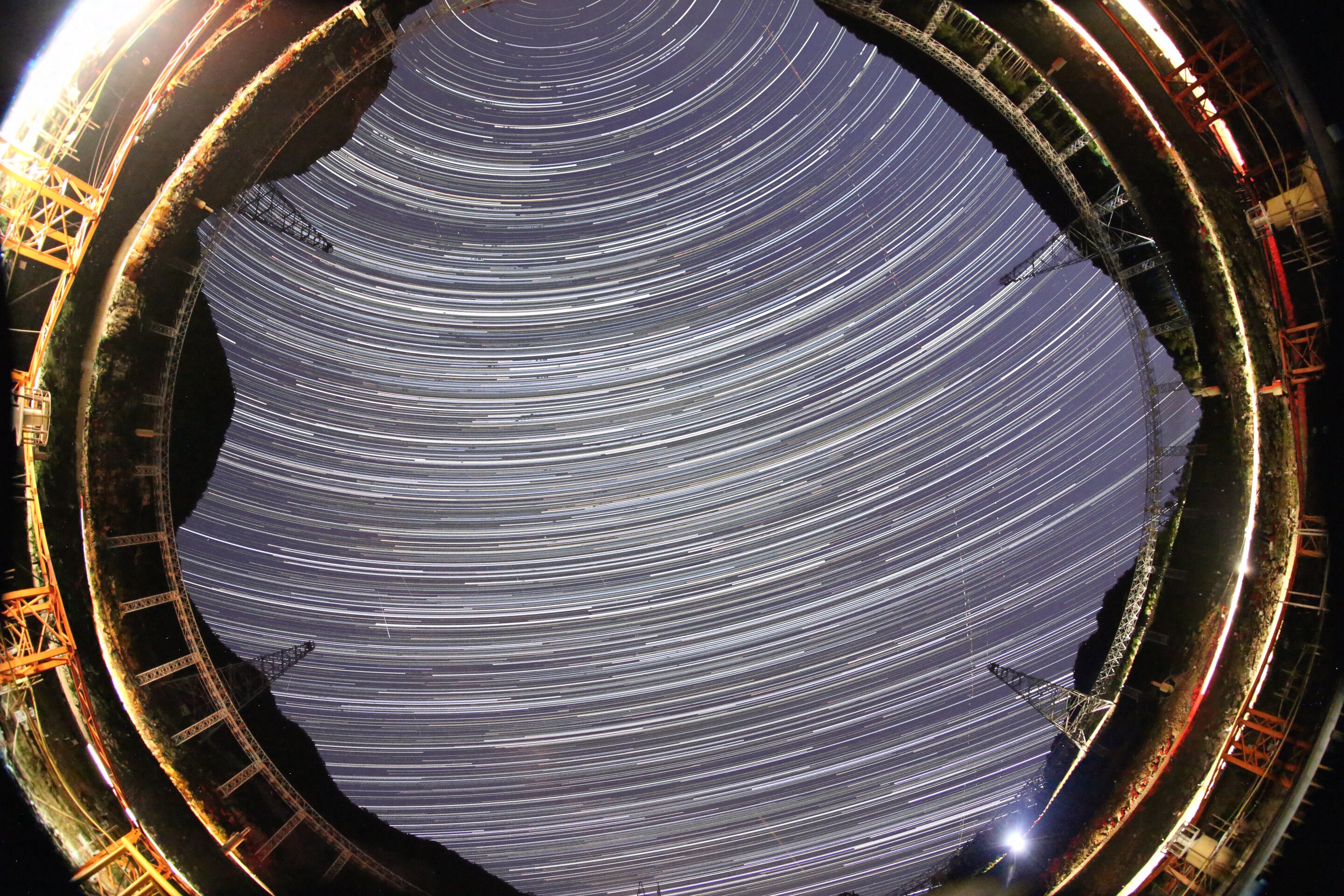A group of Chinese scientists has recently found key evidence for the existence of nanohertz gravitational waves, marking a new era in nanohertz gravitational wave research. The research was based on pulsar timing observations carried out with the Five-hundred-meter Aperture Spherical radio Telescope (FAST).
i believe that the western centric NANOGrav also saw something significant on this front
Yes, the western detectors are not as sensitive, so they have to use a longer timeline to find similar patterns in the data. The Chinese setup is so much better that they can corroborate the data with a timeline of only 41 months.
Taking advantage of FAST's high sensitivity, the CPTA research team monitored 57 millisecond pulsars with regular cadences for 41 months. The team found key evidence for quadrupole correlation signatures compatible with the prediction of nanohertz gravitational waves at a 4.6-sigma statistical confidence level (with a false alarm probability of two in a million).
NANOGrav data set is over 15 years. So a rough estimate is that the Chinese setup is ~4x as sensitive.
I love Chinese astrophysics. Their high energy gamma ray array, LHAASO, is incredible.
This is such a crazy big deal and I don’t fully understand it but it’s really cool god I love physics
scientists [have] recently found key evidence for the existence of nanohertz gravitational waves, marking a new era in nanohertz gravitational wave research
This phrase feels really funny to me for some reason
Feels like a quote from the news station in Tomodachi Life
Five-hundred-meter Aperture Spherical radio Telescope (FAST).
They missed the chance to call it
Five-hundred-meter Aperture spherical Radio Telescope (FART).
So what does this do? It helps us track celestial bodies that dont emit light? Can this help us achieve anything?
I probably don't know enough to answer too well, but the main thing is just understanding how gravity works via these gravity waves. With electromagnetism, we have a pretty decent understanding (we think) of what is going on. We understand electrons and magnetic fields fairly well for instance. Gravity is still much more theoretical in how it functions. We haven't been able to discover gravitons yet.
So this project uses the fast spinning pulsars as galactic metronomes. And using that data we can see that there are gravity waves with wavelengths ~4 lightyears long. That means the wave takes 4 years (gravity waves move at the speed of light too) to pass by. So now we have evidence that mass, relative motion and gravity waves are related phenomenon. Basically, we can hear lower frequency gravity waves now. LIGO was only able to hear very high frequency/short wavelength gravity waves, which are much less common. So now we have a good method of measuring these common super long wavelength gravity waves. It is believed that these are near constantly emanating from galaxies that contain two (or more?) super massive black holes orbiting each other.
So TLDR: We can now measure very tiny variations in gravity over huge distances (galaxy scale) and years long time frames. This provides a whole new way to look at astro-gravity stuff that we didn't have before. And it all confirms theories that have been around for many decades. Heavy stuff moving around makes ripples in space-time that move at the speed of light.
This could eventually lead to new theories and understanding. It's a bit like inventing a microscope when all you have before was a magnifying glass. Now you can see a lot of things going on that you just couldn't before.








